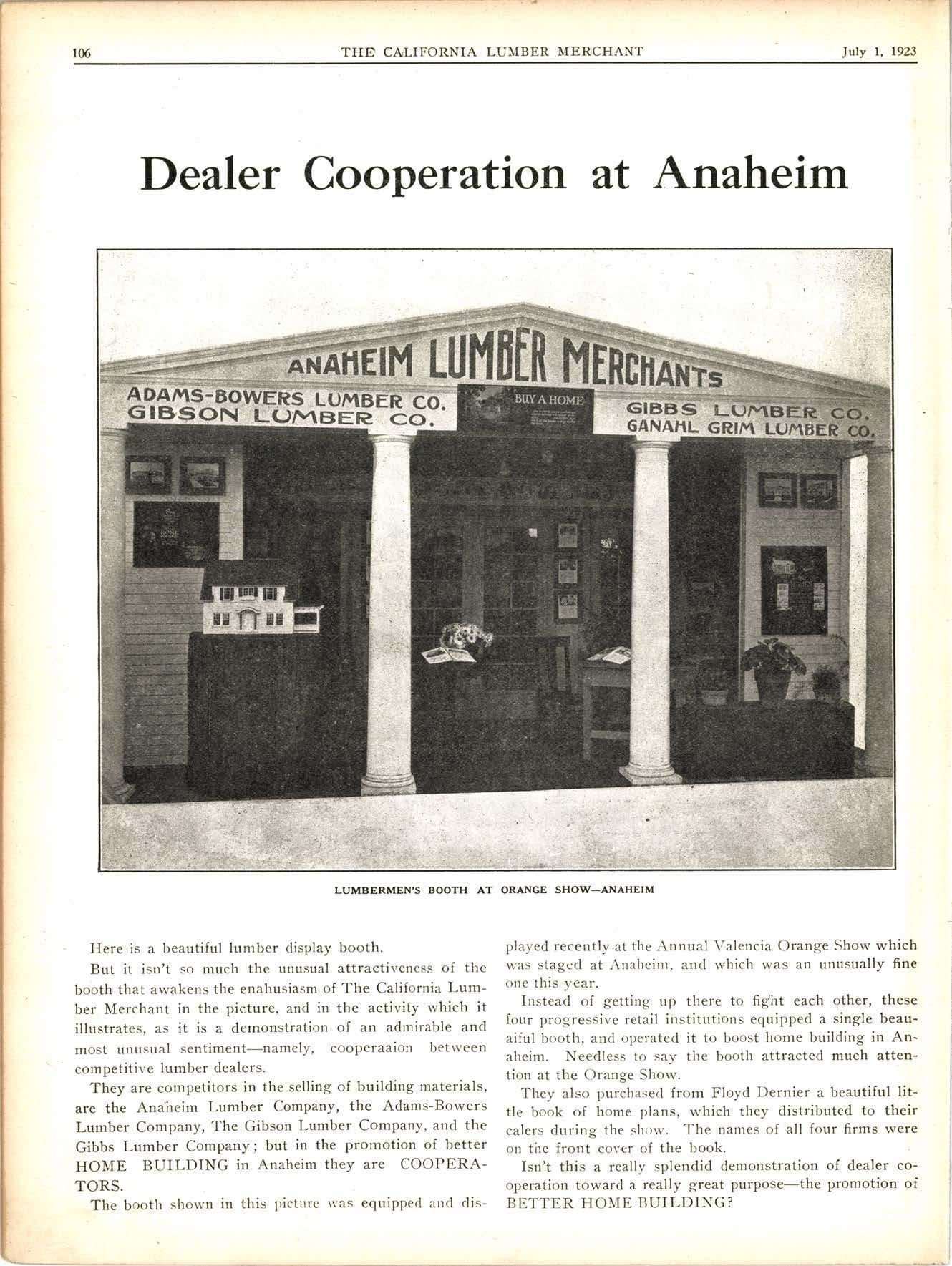
3 minute read
Lively Discussion Starts as to Proper Distributor for Insulation
Houses are requi'ring a new layer. House builders are demanding it. It is called "insu1ation."
Building material dealers and contractors have at last got something really new to talk about and sell. The bored carpenter who put the beveled siding on a house wrong side out because he wanted to see and do somethin.g new, should have lived just a few years longer.
Like all new things that are beginning to take hold, insulation has startedJ some lively argrrments. Chief among these is the discussion about the logical retail outlet for insulation. A few years back when only theorists believed iir house insulation nobody wanted to sell it. Today when it begins to loom up as a building necessity there is a lively scramble in several quarters to get in on the ground floor. The outcom,e m'ill be ,mighty interesting for the bag of profits at stake is not small.
Some claim that insulation is a specialty like building hardware and that it should be sold by the retail hardware dealer. Some claim that specialty stores handling insulation and a few other building specialties will com,e iinto existence. And still others say that it is a major building material and as such it should be sold by the established retail building material dealer.
One point all agree upon. And that is the sales and profit possibilities for the retailer who sells it. No amount of pro and con arguments will settle the matter at this early date. Time will tell. The profits are there and they will fall do the dealer or class of dealers who ,get behi,nd the product and push it.
A real adva,ntage will accrue to the dealer oi class of dealers who pioneer-who take hold of t;he proposition at the start. The dealer who establishes himself locally as insulation headquarters will gain a leadership that will be diffibult to overcome.
If local home-builders thave been ,ed,ucated to associate insulation with hardware dealers, or with sorne particular hardware dealer, they will very naturally inquire at the hardware store first when they are in the market. On the other ha,nd, if insulation means to them a building material obtainable at the lumber yard, they will very naturally expect to buy it or have their,contractor buy it alo,ng with the lumber, cement, brick, shingles and paints. Contractors. too, like all other human beings are creatures of habit. If they becom,e accustomed to ordering insulation with their lumber bills it vvill not be such a simple matter to induce them to purchase it with their nails and building hardware.
In considering the retail sales possibilities o,f this new product one has to start with an entirely different viewpoint. Insulation is in a class by itself. No other product in tihe building material field has faced the same unique maketing conditions. In fact there is ,no parallel in the building material field by which to guage the future growth and possibilities of insulation.
Insulation is a major building material which eventually will be used'in every-home; Its use is tod,ay i,ncreasing at an amazing rate; this is the staring point. 'Some day in the very- near future it will be acclaiired as indispensalte. A few :houses in a neighborhood make it hard to sell an uni,n- sulated house.
Unlike other new building materials, insulation does not displass, nor does it compefe with any ,other building ma- teri'al. It is not like composition ,roofing which mu-st be sold -in cornpetition with shingles. Nor-is it like stucco wh-ich competes with wood siding or face brick. The retailer does not,have to lose one salE in order to gain another when he sells insulation. There is no left ha,nd working against the right. Every sale of insulation is in additioi to the other bill of materials.
_ M-"ry retailers have already to develop in earnest their local markets. They have proved that inJulation is already a big paying ptopoiitiotr. Ther. dealers ate teepin th# investment low but are turning their stock fiequently. Every home-builder is a prospective customer. Cont-ractois everywhere have become enthusiastic boosters and have been the cause of frequent reorders.
Some harw?r€ and lumber retailers who have been interviewed'have been inclined to treat insulation lightly. They favor a_policy of waiting for the market to develop, beforl they take it on or push it. Many of these dealels see a great {uture for insulation but contend that it is up to the manufacturer to develop the rnarket. They claim- further that they connot make any profit as long as they have to spend any time to sell ii.
And fifty miles along the line are other dealers who take justthe opposite view. They will tell you that they already sell insulation and that they are out to establish themselvei locally as headquarters for it. Many of these dealers have given a great deal of thought to this question of handling in.sula_tion. They believe in it and have very definite rea-sons for selling it. Some of these reasons th-ey give are:
It would seem from all this discussion that taking on a line of insulation means a heavy investment. It is nothing of the sort. It is a very simple m.atter for a dealer to try out the sales possibilities of insulation. It can be boug,tit in less than car load l,ots. And the insulation manufacturirs are prepared to furnish sales and advertising helps to aid in moving the stock. It really takes very little on the dealer's part to get started-what comes after depends, of course, upon th,e dealer.
The CALIFORNIA LUMBER MERCHANT will be glad to receive and publish any arguments, pro and con, on the proper distribution of this commodity.










